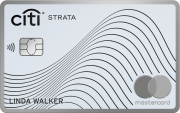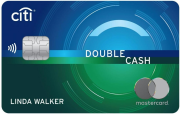The content on this page is accurate as of the posting date; however, some of the offers mentioned may have expired.

When you take out a loan or apply for a credit card, there is loads of financial jargon to see into. While you are often confused with all the information in the complicated fine print, there is one basic thing that determines the cost of your loan and that you have to pay prime attention to. It is the credit card APR that is required by law to be disclosed to the borrower so that the borrower can calculate how much they will pay on a monthly basis and how much the loan will cost them on the whole.
The basic understanding of interest rates and APR is a must if you intend to apply for a loan and want to keep as much of your money as possible in your wallet. Let's have a look at the basic terminology.
Credit card APR is the fist thing to consider when you apply for a credit card. The lower APR you have, the less you'll pay at the end of a year. APR (Annual Percentage Rate) is percentage of the interest paid on a yearly term. Different companies may disclose their APRs in a different way - some declare their rates as a monthly interest while others put it as a yearly rate. So, when you are offered an irresistible in your opinion APR of 2%, take time to read about it in the fine print. If it is a monthly interest, which is likely, your APR at the end of the year will be as much as 24% which is far above the average currently.
So, best APR ensures best deal with the creditor. Lowest APRs are usually offered with online credit card applications because web resources provide for lower costs associated with processing your application form.
APR is different from interest, so do not mix them up. Interest is the cost of the loan which you have to repay at the end of the loan life. It is the price of your loan on the whole, meaning that you pay it on top of the principle amount - the amount you initially borrowed. If, say you borrowed $5000 at 7% interest rate, then you are to repay $5 350 for it. $350 is the interest on $5000 (5000*7/100). That's it.
Some loans such as mortgage for example have two different rates - interest rate and APR. APR is usually higher because it includes the interest itself and any additional costs like closing costs, mortgage insurance and others.
As to credit cards, you'll usually find APRs on them and not interest because the APR is a better reflection of borrowing cost than the interest alone. Based on a yearly percentage, APR gives you a clearer picture on how much you'll pay.
Owing to the hot competition between major credit companies, APRs may be extremely low. Oftentimes they are combined with no annual fees, 0% intro rates and rewards. Anyway if you are shopping for a really beneficial deal, find a lowest APR card to apply for.





